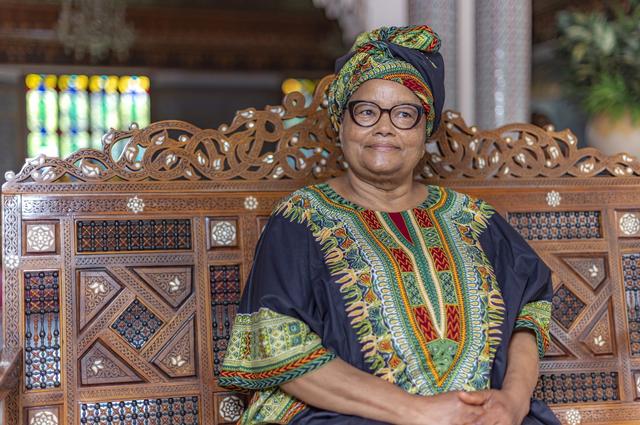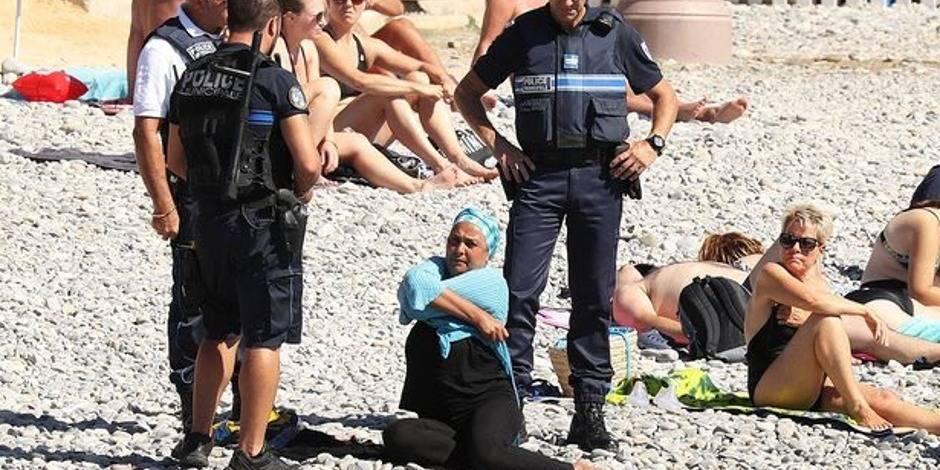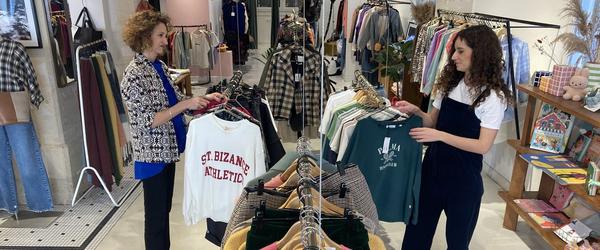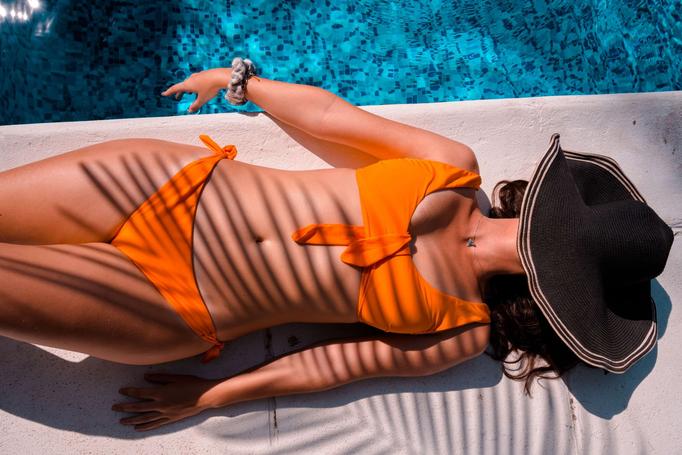Sustainable mode: the instructions of the instructions must still prove itself
UNES workshop, Panafrica and Hopaal.These three sustainable fashion players on the Internet are experimenting with the instructions on certain models.And intend to generalize the formula on all of their collections if the returns are conclusive.
The good old concept of recorded milk bottles is not dead.For one or two years, young brands born on the web take up this model of yesteryear: recover products or packaging by giving the customer a sum, a voucher or an advantage.Then recycle the goods or put it on the second hand market.
Fashion is no exception to this return of flame, maintained by the anti "fast fashion" movement in a textile industry renowned as one of the most polluting in the world.In September 2020, UNES workshops, an ethical and collaborative fashion brand, launched on the Ulule platform a pair of sticked tights in recycled nylon sold 23 euros including two euros in instructions.A rather positive first test: in three weeks, it sold more than 6.000 copies and since fall, 500 pairs have been returned to be transformed into hair darlings.
Limit materials to recycle
"The instructions have all the more interest for short -lived products, such as tights," says Matthieu Jungfer who co -founded UNES workshops in 2018.But it can concern more elaborate articles.In this case, the instruction engages the brand in an effort of advanced eco -design.There is no point in recovering products if we cannot reuse them.Thus, Hopaal made sure that his "infinite" recorded jacket, developed with French 1083, only uses one material, recycled polyester of French manufacturing.The company can give it a second life more easily.The digital recycled clothing brand launched in 2017 has made 400.The vast majority have already been sold, at 205 euros each, including 20 euros in instructions.
More complicated is the Depanafrica task, a brand of sneakers made in Africa with Wax fabrics from Senegal, Burkina and Ghana.Her shoes indeed aggregate many very different materials: eraser, polyester, cotton, canvas, glue ... The young shoot still tried her luck in April 2020 with Arusha basketball, sold 145 euros, including 10 euros in good instructionspurchase.Eco-conceived, the model limits as much as possible the number of materials used.A conclusive test: in three weeks, almost 1.500 copies found takers on the Ulule platform.“For the past year, Panafrica has recovered 150 pairs but she is waiting to be able to store at 3.000 to start the sorting and recycling process, ”says Vulfran de Richoufftz, brand co -founder.The least worn will be sold for used on its site or dispatched to zero Waste Shoes, a reconditioning specialist.The others will be sent to a Portuguese partner who will grind the soles to make new pairs.
Additional costs of the instructions
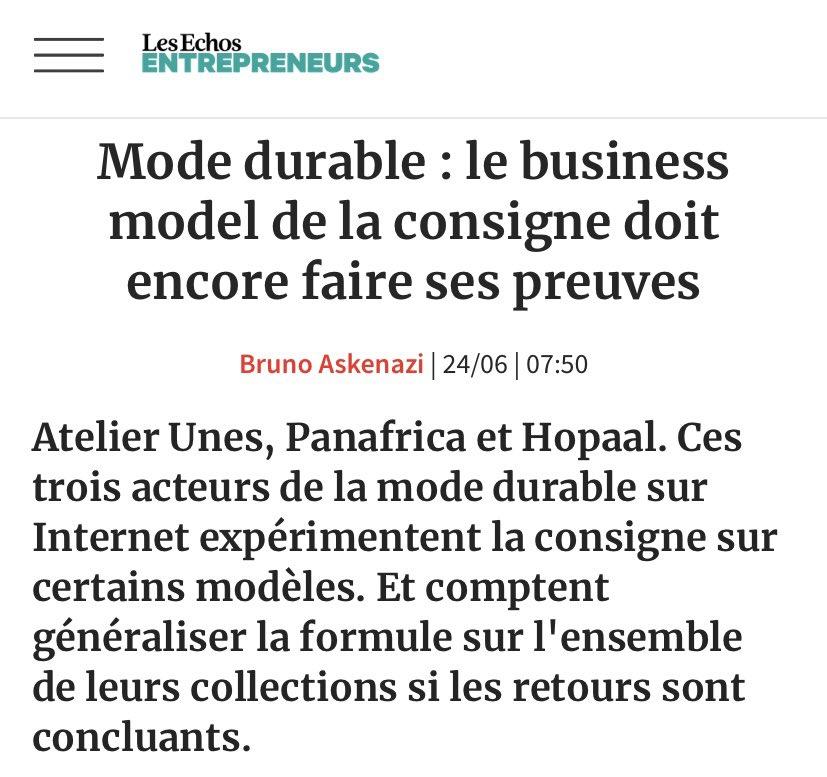
How to fix the price of the instructions?The balance is delicate to find.Sufficiently incentive, the price should not plug the value of the product either and curb the purchase.At Hopaal, the issue of remuneration was previously posed at 1.000 customers or site visitors.63 % replied that a reward would encourage them to return the jacket.On the amount, opinions were shared: 27 % leaned for 10 euros, 22 % for 15 euros and as much for 20 euros."Finally, the product being relatively expensive, we have chosen 20 euros to maximize the probability that customers send us their jacket," explains Clément Maulavé, co -founder and president of Hopaal.A consensus seems to be emerging around 10 % of the product value.But nothing is less certain !The proof, Panafrica plans to go from 10 to 5 euros.By limiting a cost that will grow as returns, the brand seeks to preserve its margins.
And for good reason, the setpoint system generates cascade costs.The first expenditure position is that of the consignment product return costs: 5.50 euros excl..Difficult to weigh this cost on the shoulders of the individual who already makes an effort by returning the article.Second center of expenses: storage of returned items while waiting for their treatment.It is then necessary to take into account transport to partners specializing in the valuation of used prizes and, at the end of the chain, the treatment costs for recycling.Extend the instructions to the whole offer without having tested logistics and assessing costs would therefore be hazardous.Recovery of products and their reuse require a well -oiled organization.Otherwise, the approach can become financially untenable.
Test before generalizing
To generalize the instructions, new resources must be mobilized.Until now, the brands concerned have favored Lecrowdfunding.UNES workshop finalized last May a fundraising of 400.000 euros on the participative investment platform lita.Co "in order to develop 100 % recycled and recorded clothing by 2023".The Parisian brand of 7 employees has just released a vesting belt (grape marc) at 50 euros, including 5 euros in instructions.The start of a full range of recorded accessories (socks, tights, etc.) responsible for preparing the ground for all ready-to-wear.
After his "infinite" jacket, Hopaal plans to duplicate the approach to recyclable t-shirts.But Biarritz's company intends to take its time to set up a full cycle that does not generate unbearable additional cost."The ideal is to arrive at a T-shirt at 55 euros including 5 euros in instructions, an acceptable price compared to our classic models at 45 euros", summarizes Clément MAULAVÉ.At Panafrica, the goal is to gradually generalize the instructions to the whole collection.The brand's website should be redesigned soon to support the process.

